After Rajasthan, Karnataka has the second largest expanse of dry land in India, and its capital city Bengaluru is a plateau surrounded by dry regions. These areas are an undulated topography covered with granite, rocky hills and gravelly soil. With this topography, districts around Bengaluru have not just been dry for several decades, but there has been a huge fall in water levels, vegetation and wildlife too.
Seventy-year-old Mukund Rao, a retired Assistant Commissioner at the Commercial Tax Department, is determined to bring back at least parts of forests around Bengaluru and in various other districts in Karnataka.
Called “Forest Man of Karnataka” by friends and colleagues, Mr. Rao started his afforestation efforts at his hometown in Channapatna, Ramanagara district, in 2006 along with his wife Latha Rao.
The Chikkamannu Gudde which was neglected by the government of Karnataka for several decades, today has a Forest Department Office with staff and security. Many such places are turning into forests, thanks to the efforts of Mr. Rao who has been collecting seeds and planting them in various dry lands in Karnataka.
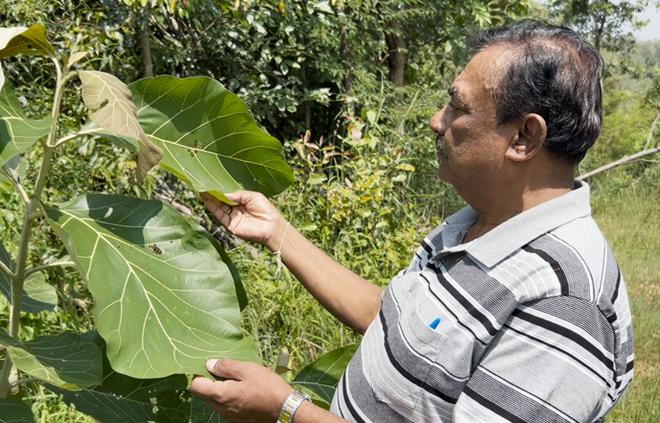
In his home town
Sharing his journey of 18 years, Mr. Rao, who famously planted 3,750 saplings of Pongemia/Honge at South Bengaluru’s ISRO Layout in 1995, says that creating a forest was a childhood dream for him.
“My mother, who taught the importance of trees and protecting the environment, was my first teacher. I was very fond of the environment since childhood. The popular Kengal Anjaneya Swamy temple is just a few kilometers away from the first forest I grew. Whenever I visited the temple, I would see this dry, barren hill called Chikkamannu Gudde located a few kilometers away and always wondered how it would look if it had trees and plants. Since then, it was my dream to grow a forest there. My journey towards achieving it started in 2006 through the project Basket to Barren Land,” he recalled.
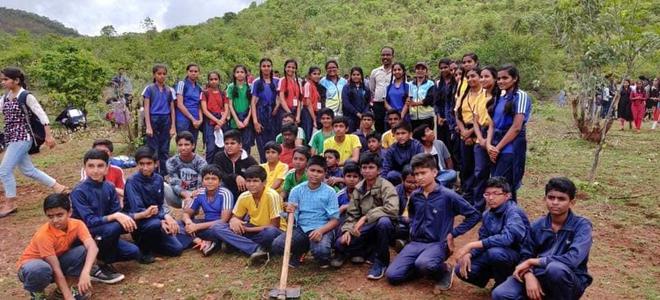
“Basket to Barren Land” conceptualised by him was implemented at a minimum-cost in this region by dibbling seeds and planting saplings. The project aimed at creating a forest in a barren land by collecting seeds from various parts of the states. The project focused on planting seeds that could also bear fruits, in order to increase wildlife in the area.
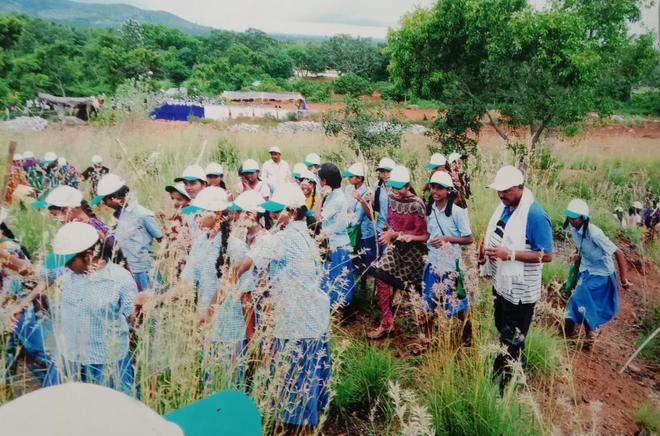
Roping in the young
To bring in more transparency and environmental awareness among youngsters and improve their participation towards conservation efforts, Mr. Rao also conceived a concept called Beejanidhi Butti (Seed tressure box).
Under the project, students from various schools in and around Ramanagara district were made to collect seeds and drop them in the seed box placed in the school. The seeds accumulated in the box would then be dipped in a solution called Beejamrutha (a mixture of cow dung, cow’s urine, limestone, and jaggery), a concoction developed by agriculturist Dr. Subhash Palekar for augmenting the germination rate of the seeds.
The students would then dibble the seeds and saplings in the planned area. This project covered 4,500 acres of forest area land and 1,450 acres of dry land with the help of 1,620 students.
“Many of those students are now in their late 20’s. They come to me and remember the days they spent with us and say that they are proud of the forest they have created along with us,” says Mr. Rao.
After 17 years, today, the dibbled area is flourishing with diverse flora and fauna. Mr. Rao says the development of the forest area has not just increased vegetation but has brought in wildlife and an increase in water levels.
“This forest was once a barren land. Today, deer and elephants frequent this forest. The growth of the forest has also increased water levels. For many years average rainfall in this area was 450 millimeters, but since 2020 it has gone up to 650 millimeters,“ he said.
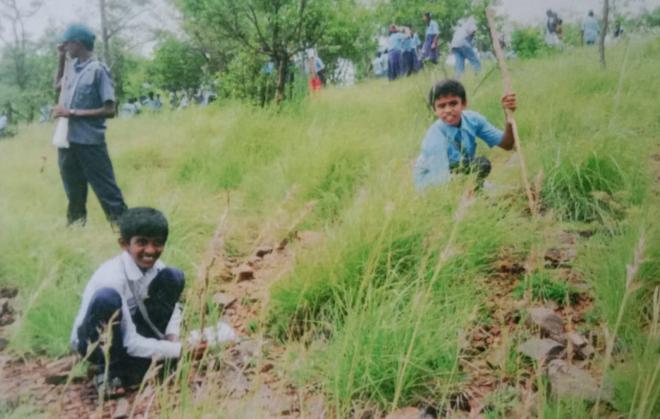
A slow process
The journey, however, has been slow and difficult, and the initial years filled with heartaches.
“In the first three to four years there were absolutely no results, not even a sapling. Six years after dibbling the seeds a few saplings started showing up, and gradually the forest grew. In 2016, there was still no dense forest, but the once-dry area had completely turned green, and that motivated me to start this initiative in other districts across Karnataka,” Mr. Rao says.
In the Antharaganga forest area in Kolar, Mr. Rao covered 410 acres of land with the support of 240 students, sowing three lakh seeds. In the Kurki forest area, two lakh seeds were planted on 232 acres of land with the help of 210 students.
At the Veeradbhadraswamy Temple forest area from the same district, 1.20 lakh seeds were sowed over 180 acres with the support of 242 students. Similarly, at the Kallaganguru forest area in Shivamogga, 12 lakh seeds were sowed over a forest area of 800 acres.
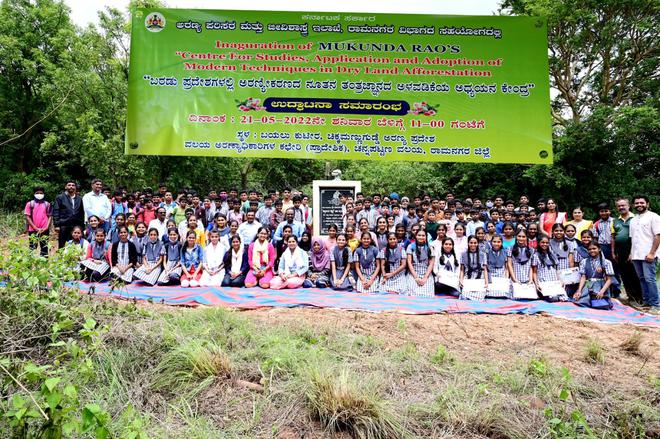
Need to expand
Talking about the future of forests in Karnataka, Mr. Rao says, “Karnataka requires 33% of forest area. Currently the state has only 28%. I have begun my plans to cover the remaining drylands as early as possible.”
“But it is also important for the State Government to follow methods of dibbling in dry lands, and more initiatives like these. Schools must introduce lessons on the same and build more awareness amongst students about the importance of afforestation, wildlife, good rains and more,“ he suggests Mr. Rao.







